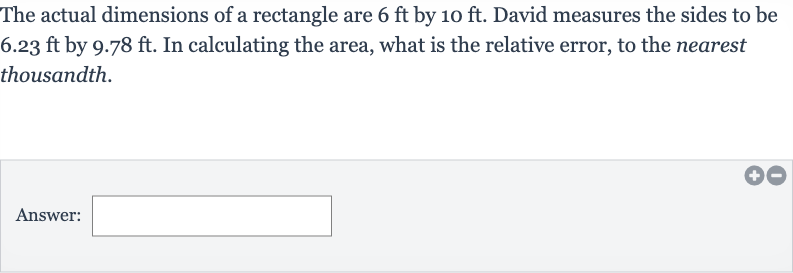Full solution
Q. The actual dimensions of a rectangle are by . David measures the sides to be by . In calculating the area, what is the relative error, to the nearest thousandth.Answer:
- Calculate Actual Area: To find the relative error, we first need to calculate the actual area and the measured area of the rectangle.The actual area is the product of the actual length and width.
- Calculate Measured Area: Now, let's calculate the measured area () using David's measurements.
- Find Absolute Error: Perform the calculations for both the actual area and the measured area.
- Calculate Absolute Error: Next, we need to find the absolute error, which is the difference between the measured area and the actual area. Absolute error =
- Find Relative Error: Calculate the absolute error using the values we have.Absolute error =
- Calculate Relative Error: To find the relative error, we divide the absolute error by the actual area and then multiply by to get a percentage.Relative error =
- Calculate Relative Error: To find the relative error, we divide the absolute error by the actual area and then multiply by to get a percentage.Relative error = Now, let's perform the calculation for the relative error.Relative error (rounded to the nearest thousandth)
More problems from Percent error: word problems
QuestionGet tutor help
QuestionGet tutor help
QuestionGet tutor help
QuestionGet tutor help
QuestionGet tutor help

